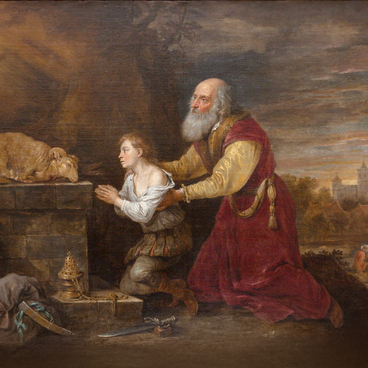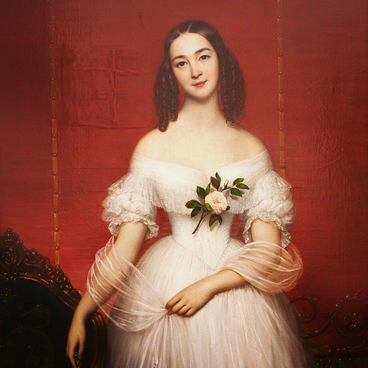The 17th century is considered to be the Golden Age of Dutch painting. During this period, artists like Rembrandt, Johannes Vermeer and Frans Hals created their masterpieces. The popularity of painting arose due to some grand historical events. Seven Dutch provinces gained independence from Spain and formed a republic, which soon turned into a center of trade. Protestantism supplanted Catholicism. The demand for religious canvases fell, and paintings on ‘secular’ themes — landscapes, portraits, still lifes — quickly became popular. In addition, the living conditions of the Dutch improved, and many citizens began to buy paintings and decorate their houses.
Dutch artist Isaak Jansz van Ostade was born in Haarlem, a province of North Holland. He spent all 28 years of his life there. He was the younger brother and talented apprentice of Adriaen van Ostade, known for his genre pictures of Dutch peasant life.
The work of the Ostade brothers belongs to the art of the Little Dutch Masters. This is a term which is used to refer to the Dutch artists of the 17th century, who painted intimate scenes of everyday life on smaller canvases. Such paintings were acquired by poor townspeople, artisans and peasants, and decorated almost every house.
The Ostade brothers introduced a new hero into painting — the commoner. In the 1640s, Isaak Jansz van Ostade painted about one hundred landscapes, portraits and compositions that depicted the life and customs of the 17th-century Dutch peasants.
In his works, Jansz van Ostade often depicted the festive side of the life of his heroes, ordinary people. The painting ‘The Feast’ is one of such works. The brownish-golden tones, subtle transitions, soft shades, and flowing light — all this indicates that the artist was influenced by Rembrandt. The color palette conveys an atmosphere of fun: peasants gathered in a tavern — a small place of business where people come to drink alcoholic beverages. The action takes place in the shadows with only a ray of light passing through the open door. A woman reads aloud, a flutist stands next to her, a couple dances nearby. The pub is spacious, but its visitors prefer to relax side by side.
In the 1640s, Ostade painted several winter landscapes with sleighs and skaters. The silver-gray colors of his canvases represented the peculiarities of the Dutch winter. The artist sought to convey the atmosphere of humid weather and diffused silver light. Unlike Pieter Bruegel the Elder, who painted pastoral winter landscapes with a festive atmosphere, Ostade adhered to a realistic manner of painting.
Dutch artist Isaak Jansz van Ostade was born in Haarlem, a province of North Holland. He spent all 28 years of his life there. He was the younger brother and talented apprentice of Adriaen van Ostade, known for his genre pictures of Dutch peasant life.
The work of the Ostade brothers belongs to the art of the Little Dutch Masters. This is a term which is used to refer to the Dutch artists of the 17th century, who painted intimate scenes of everyday life on smaller canvases. Such paintings were acquired by poor townspeople, artisans and peasants, and decorated almost every house.
The Ostade brothers introduced a new hero into painting — the commoner. In the 1640s, Isaak Jansz van Ostade painted about one hundred landscapes, portraits and compositions that depicted the life and customs of the 17th-century Dutch peasants.
In his works, Jansz van Ostade often depicted the festive side of the life of his heroes, ordinary people. The painting ‘The Feast’ is one of such works. The brownish-golden tones, subtle transitions, soft shades, and flowing light — all this indicates that the artist was influenced by Rembrandt. The color palette conveys an atmosphere of fun: peasants gathered in a tavern — a small place of business where people come to drink alcoholic beverages. The action takes place in the shadows with only a ray of light passing through the open door. A woman reads aloud, a flutist stands next to her, a couple dances nearby. The pub is spacious, but its visitors prefer to relax side by side.
In the 1640s, Ostade painted several winter landscapes with sleighs and skaters. The silver-gray colors of his canvases represented the peculiarities of the Dutch winter. The artist sought to convey the atmosphere of humid weather and diffused silver light. Unlike Pieter Bruegel the Elder, who painted pastoral winter landscapes with a festive atmosphere, Ostade adhered to a realistic manner of painting.



